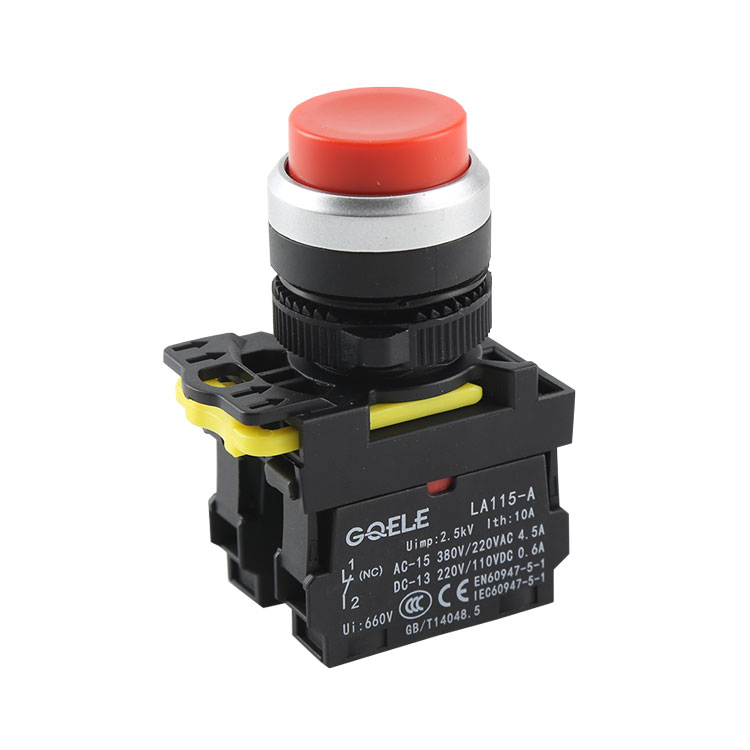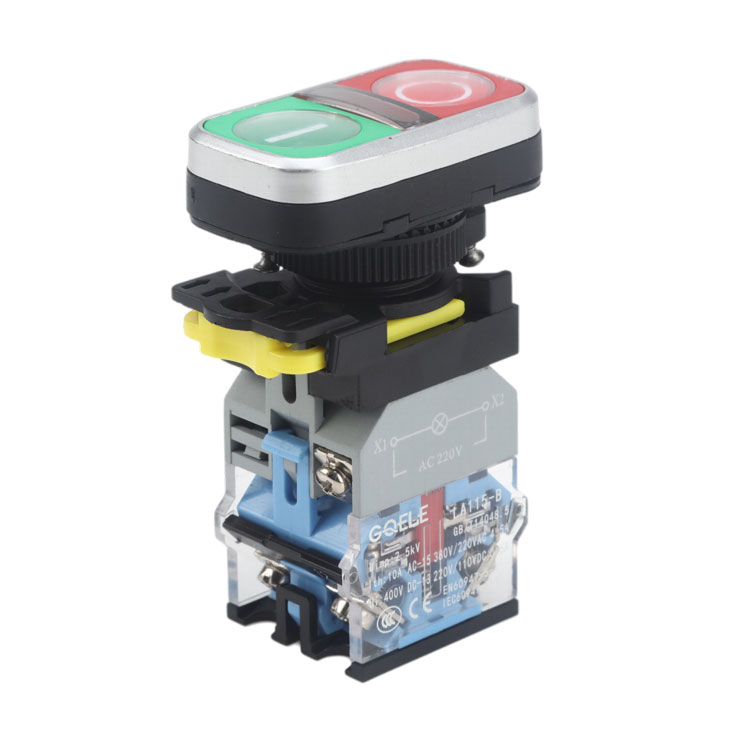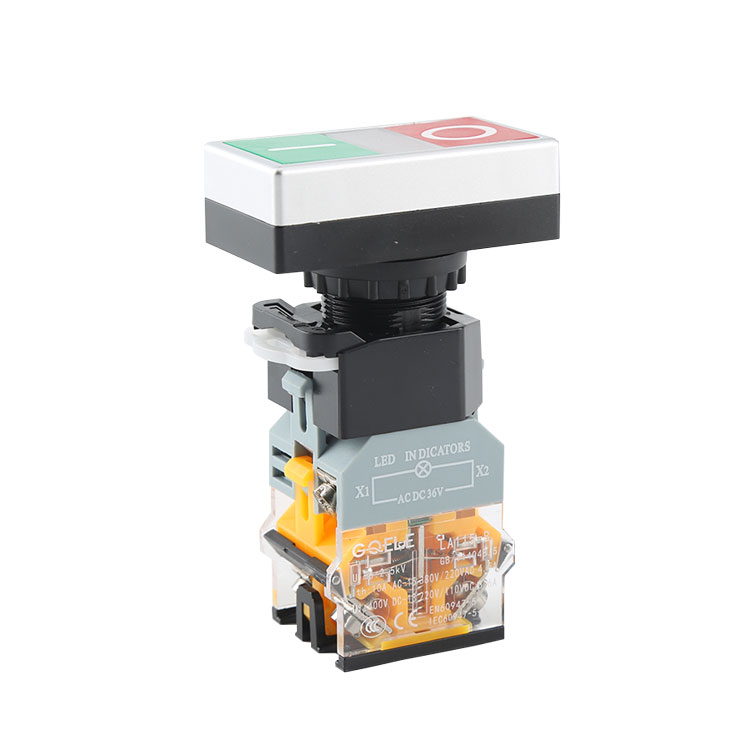
GL-12F10E/R23-SJ Blue Waterproof Anti-Vandal LED Metal Indicator Light

GL-22FA10-S

LA115-A5-11XD High Quality 1NO & 1NC Two Gears Self-locking Selector Switch Push Button With Light Better Price Waterproof

GXB2-BW82364 1NO&1NC Illuminated Green&Red Marked Double Control Flush Head Push Button Switch

AL701-R-31Z4 LED flashing amber warning light single layer red colour tower light

LA115-B1-11MD 1NO&1NC Momentary Illuminated Mushroom Push Button With Red Light

CJX2-(LC1-D)95 CJX2-9511 220V 380V 415V 660V 3 Phase 3-Pole cjx coil ac Electric magnetic contactor

LA115-N-11Y 1NO&1NC 2-position Maintained Key Control Selector Switch Push Button With Round Head And No Light

AD116-22D Plastic Red green 220v 110v Ac Led Pilot Lamp led Indicator Light

LA115-A5-11HT High Quality 1NO+1NC Maintained Extended Push Button With Round Head And Without Illumination

GXB2-EB40 Push Button Accessories Plastic Yellow Push Button Switch Cylinder Protective Cover Shell

LA115-N-11RD1











